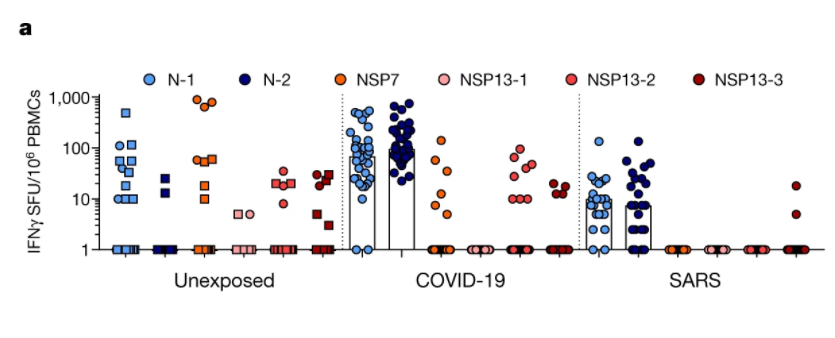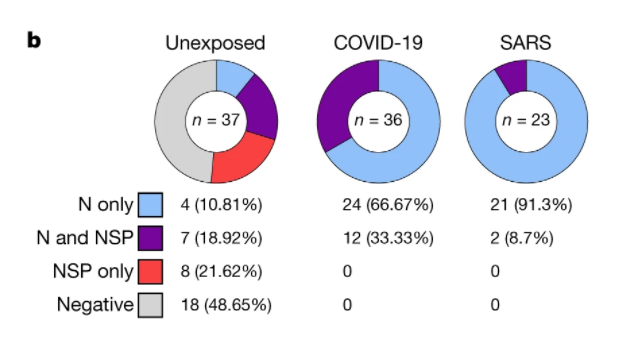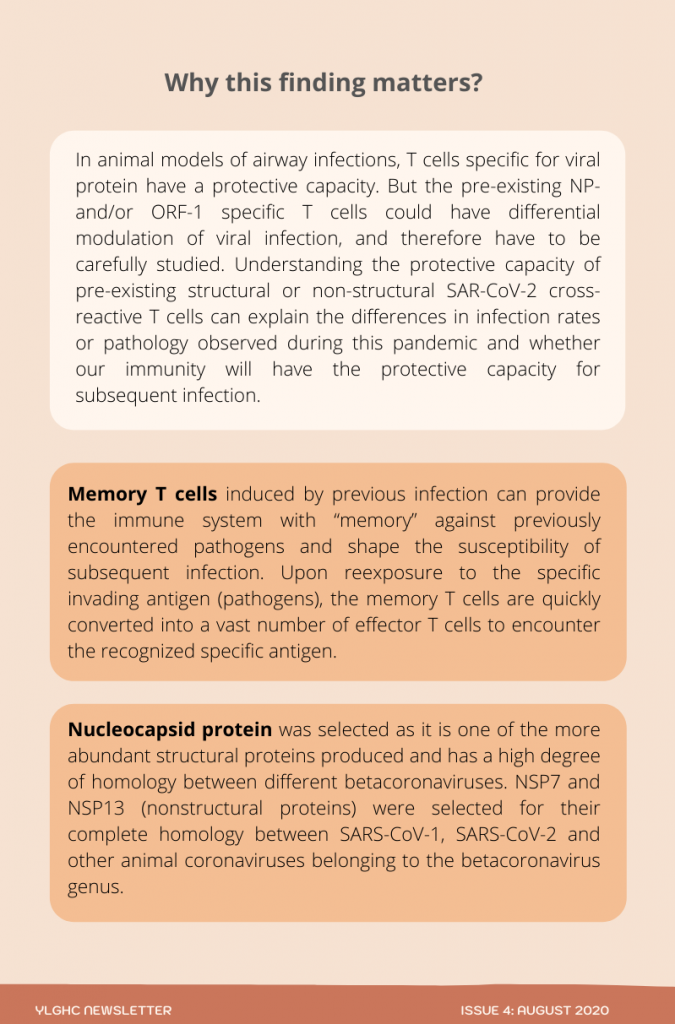How SAR-CoV-1 Immune Cells May Protect Us from SAR-CoV-2 Infection.
Author: Beomhyeok Lee


Figure 3. The figure shows immunodominance of SARS-CoV-2 responses in COVID-19- and SARS-recovered patients and in unexposed individuals.
The article on Nature by Nina Le Bert et al, published on July 15, 2020, studied T cell responses to structural (nucleocapsid protein, NP) and nonstructural regions (NSP-7 and NSP13 of ORF1) of SAR-CoV-2 in COVID-19 convalescent patients ( those recovering after an illness or operation), (n=36). All 36 subjects demonstrated the presence of CD4 and CD8, T cells recognizing multiple regions of the NP protein. The researchers identified that SARS-recovered patients (n=23) still possess long-lasting memory T cells reactive to SARS-NP 17 years after the 2003 outbreak, which displayed robust cross-reactivity to SARS-CoV-2 NP. Surprisingly, they frequently detected SARS-CoV-2 specific T cells in individuals with no history of SARS, COVID-19 or contact with SARS/COVID-19 patients (n=37).
The results of the study show that infection with betacoronaviruses induces multi-specific and long-lasting T cell immunity to the structure protein NP because the NP protein, which is abundantly produced in cells secreting mature virions, would be expected to result in preferential boosting of NP-specific T cells. In contrast, the reason why NSP7/13 specific T cells are detected in SAR-CoV-1/2 unexposed donors and recovered individuals is unclear. The researchers theorized that exposure to coronavirus might just prime ORF-1-specific T cells, since the ORFspecific T cells could hypothetically abort viral production by lysing SAR-CoV-2 infected cells before the virus can mature.

References:
Figure retrieved from the article “SARS-CoV-2-specific T cell immunity in cases of COVID-19 and SARS, and uninfected controls”, Nina Le Bert, July 15, 2020
Article title: SARS-CoV-2-specific T cell immunity in cases of COVID-19 and SARS, and uninfected controls https://www.nature.com/articles/s41586-020-2550-z